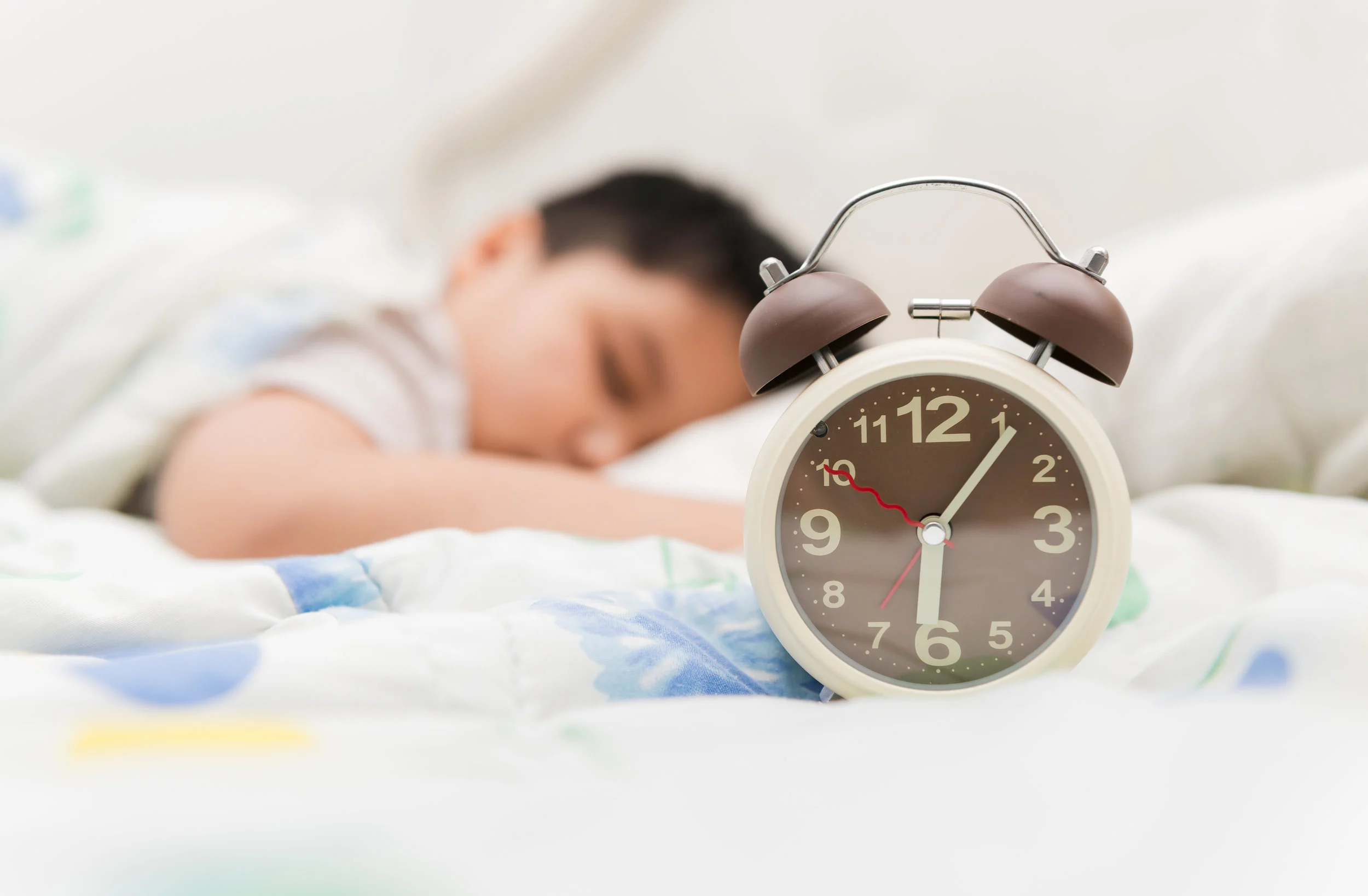Are your kids already noticing that it’s starting to get brighter out earlier in the morning? We just spent the past few days at the cottage, and without our usual blackout blinds, needless to say that our days started quite early! My son kept telling me that it was time to get up as it was light out :) This of course means that spring is just around the corner, and that it'll soon be time to change our clocks this Sunday, March 11 at 2:00 a.m. Luckily, there’s just enough time remaining this week to take some simple steps to help your little one with this transition.
1. Optimize the sleep environment
As moving the clocks can impact your child’s circadian rhythms (commonly known that their “internal clock”), you’ll want to make sure that their sleep environment is properly set up in order to control their exposure to daylight, external sounds, and even warmer temperatures over the next few months.
Firstly, you’ll want to make sure that the room is as dark as possible. Blocking out all light will allow your child to fall asleep more easily at bedtime when it’s still light out, and will also help to prevent early rising. The main purpose of darkening the room is to help your child naturally produce more melatonin when you put them to bed when it's still light out (and nap time too), which will help to induce drowsiness.
Early morning sun and warmer temperatures also tend to bring with them more external sounds earlier in the morning especially if windows are open (chirping birds, contractors etc.), so be sure to have some constant (yet subtle!) white noise in place to help drown out these sounds. Finally, warmer temperatures of course means warmer homes, so do your best this summer to keep your child’s room on the cooler side to help them sleep more comfortably.
2. How to manage your child’s schedule
You’ll need to decide to either gradually shift your child’s schedule in the coming days leading up to the time change, or to just follow the new clock come March 11.
If your child has an easier temperament and typically adapts well to changes in their schedule, you should be fine to just follow the new clock. It might take a few days for your little one to fully adjust, but by remaining consistent with your schedule and routine, their sleep should be back on track within a matter of days.
If your child is a more sensitive sleeper and doesn’t usually adapt well to schedule changes, then you should consider a gradual approach. This applies particularly if they tend to wake up close to 7:00 a.m. or later. In this case, you can start to shift all sleep periods (morning wake-up, naps and bedtime) as well as activities in the daily routine 15 minutes earlier each day over the next few days leading up to the time change. So, if your child currently awakes at 7:00 a.m., start by waking them up at 6:45 a.m., then 6:30 a.m. so on and so forth, and putting them down 15 minutes earlier throughout the day. After four days or so, their schedule should be an hour earlier, and the time change should be easier to handle. If your child has this kind of temperament but is also an early riser, only shift naps and bedtime, and once the clocks change, and the early rising should hopefully be a thing of the past - as a 5:30 a.m. will soon be 6:30 a.m.!
Tip 3: Keep your child rested
In the days leading up to changing your clocks, keep your family’s schedule low-key and avoid any late nights. This will help to keep them rested, which will allow them to transition to the new time more easily.
Finally, throughout this transition, be sure to stick to your child’s sleep routine and be consistent. Even if things don’t go as planned, just know that their sleep will be back on track in no time!

